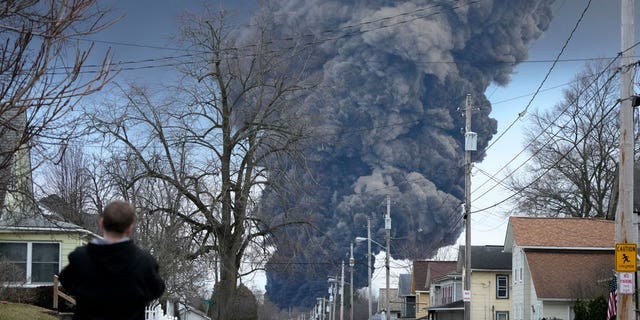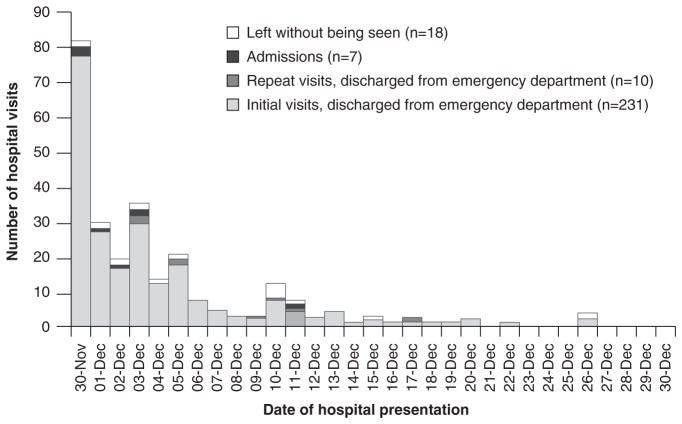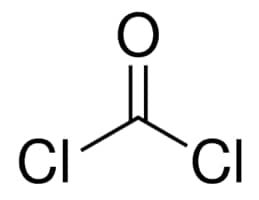Vinyl Chloride in the State of Ohio
The release of toxic chemicals including vinyl chloride in East Palestine, Ohio has raised serious safety concerns. What is vinyl chloride, and how is it toxic?
On February 3rd, 2023 a train carrying various industrial compounds became derailed in East Palestine, Ohio leading to the massive chemical spills and chemical fires.
The proceeding days led to controlled fires as an attempt to prevent possible explosions as some of the chemicals were highly volatile, leading to massive plumes of smoke that engulfed the local region and lead to widespread media coverage.

Several thousand local residents were evacuated but were allowed to return on February 8th with the idea that it was deemed “safe” as reported by the EPA and other regulatory agencies.
However, the sight of various dead animals, as well as the level of chemicals released have raised serious concerns that the local environment, as well as downstream waterways, may be contaminated with chemicals released from the train and may not be safe for human consumption or exposure.
This has caused East Palestine residents, and those downstream of the Ohio River to become concerned about possible health consequences from such an event.

In particular, several concerns have been raised over the compound vinyl chloride, although several other chemicals were being carried by the train, with evidence coming out that more agents than initially reported were being carried.
So what exactly is vinyl chloride, and why is this an agent of concern?
What is Vinyl Chloride?
Vinyl chloride is an odorless organochloride usually in the form of a liquid or gas that is used for industrial manufacturing, especially for the construction of polyvinyl chloride (PVC) products such as piping as well as vinyl records (hence the name).
Given the use of vinyl chloride in manufacturing an apparent correlation between occupational exposure to vinyl chloride and various cancers such hepatocellular carcinoma (HCC) and angiosarcoma of the liver (ASL) was noted during the 1970s.
Several of these accounts were noted by Wagoner, J.K.1 in a 1983 article with the Abstract noting that exposure to vinyl chloride was correlated with cancer for several years, but were later confirmed with animal models and epidemiological data compiled around 1974:
It appears that these emerging reports led to a notice from OSHA in April 1975 to reduce employee exposure to VC from 500 ppm (parts per million) to 1 ppm.
Although various organs can be sites for carcinogenesis it appears that the liver is a main target organ.
This is likely due to the intermediates that are produced via metabolism of vinyl chloride.
Vinyl chloride is readily absorbed by the body and is transported to the liver for metabolism. Here, Cytochrome P450 enzymes, in particular the isozyme CYP2E1 isomerizes VC into an epoxide (2-chloroethylene oxide in the following figure).

This epoxide can undergo further enzymatic metabolism including conjugation with glutathione for elimination from the body. However, the epoxide intermediate may form aldehydes (2-chloroacetaldehyde) as well which can also be further metabolized and excreted from the body as urinary metabolites (Sherman, M.2).
However, in both pathways the key players in cancer formation are the epoxides and aldehydes formed from vinyl chloride metabolism. Both of these compounds are electrophilic, meaning that they can be targets for electron-donating molecules, or nucleophiles. In this case, possible nucleophiles are the nitrogenous bases found in DNA. Thus, these epoxides and aldehydes may interact with DNA and lead to the formation of DNA adducts, or additions to nucleotides that can induce mutations.
DNA adducts may lead to misreads during replication, and if mistaken for other bases can lead to mutations in the genome which can lead to cancerous cells.
Of note, several DNA adducts from interaction with 2-chloroethylene oxide are shown below:

It’s worth noting that several of the intermediates are not isolated solely in the liver and may make their way to distant tissues and organs.
So would this be a cause for worry? In most regards yes, as the CDC notes that high acute exposure to vinyl chloride can cause serious harm, with early signs being dizziness and drowsiness, among other symptoms:
A 5-minute exposure to airborne concentrations of 8,000 ppm can cause dizziness. As airborne levels increase to 20,000 ppm, effects can include drowsiness, loss of coordination, visual and auditory abnormalities, disorientation, nausea, headache, and burning or tingling of the extremities. Exposure to higher concentrations of vinyl chloride for longer durations can cause death, presumably due to central nervous system (CNS) and respiratory depression. The gas is heavier than air and can cause asphyxiation in poorly ventilated or enclosed spaces.
It’s been argued by the EPA and other agencies that the level of vinyl chloride appeared low, which may suggest that they were below the numbers shown above. So far several in-home tests, outdoor tests, and a few water tests for volatile organic compounds from the train derailment haven’t come back with alarming results. However, this hasn’t helped to assuage many people who may be left wondering if there’s a lack of transparency.
Vinyl Chloride spill of 2012
As a frame of reference, this isn’t the first time that a vinyl chloride filled train was derailed.
On November 30, 2012 a train carrying over 23,000 gallons of vinyl chloride fell into the Mantua Creek in Paulsboro, New Jersey after the bridge the train was crossing collapsed, leading to a release of the vinyl chloride into the local environment.

At least 6,000 locals had to be evacuated while the tankers were being transported away. The NOAA article doesn’t provide specifics to the actual amount of VC released aside from the assumption made in the title, but it appears that not all of the VC was released.
In the ensuing days data was collected from local hospitals to see if people were seeking treatment due to exposure to VC, as collected in an article from Shemate, et al.3
A total of 266 hospital visits occurred in over 6 hospitals close to the derailment. Some were due to exposure, some over concerns of exposure, and some due to miscellaneous reasons.

Most of the symptoms were respiratory or neurological and appeared to be similar as those self-reported by individuals who did not seek medical treatment:
Although life-threatening acute signs and symptoms were not observed in hospital emergency departments after this chemical release, symptoms appeared to be persistent; patients continued to seek hospital care for 4 weeks after the incident. The observed symptoms were in keeping with self-reported symptoms experienced by other groups of individuals exposed in this incident who did not seek medical care,17,18 as well as with a previous report of acute vinyl chloride exposure from a train derailment, with a majority of patients experiencing respiratory and neurologic symptoms.19
This doesn’t quite explain the level of exposure or acute toxicity experienced, but given that around 2/3 of the patients had signs of neurological and respiratory symptoms that may suggest a large number of locals may have also experienced symptoms due to the fallout.
Unfortunately, aside from the NOAA report and the article from Shemate, et al. there doesn’t seem to be much information about the incident and the long term environmental/toxicological issues that may have persisted after the event, so it’s hard to determine the actual scope of the damage.
In the case of the Ohio derailment, what makes the situation even more complex is the fact that a controlled fire was done to the chemicals. In that regard it’s not purely VC or the other volatile compounds that are released, but the byproducts of combustion that may be more harmful.
Vinyl Chloride Combustion Byproducts
This was pointed out by several outlets, as two products from the combustion of VC includes hydrogen chloride, more commonly known as hydrochloric acid, as well as a formaldehyde derivative named phosgene.

As noted in a Newsweek article some questions are being raised as to whether some of the combustion products may be more harmful than VC.
Phosgene was a chemical warfare agent used in World War I although its current use is predominately as a manufacturing agent for many products.
As an aldehyde derivative phosgene is a highly reactive electrophile. Interestingly, phosgene is poorly soluble in water and inhalation of phosgene doesn’t readily produce hydrochloric acid in the lungs as was once assumed.
Instead, inhaled phosgene may interact with the amphiphilic fluids (fluids that are both hydrophilic and lipophilic) of the lungs and bind to nucleophilic moieties such as amino acids from proteins or other cellular structures, a process called acylation. This may result in acute lung injury and, in severe cases, pulmonary edema, in which excess fluid builds up in the lungs causing a reduction in gas exchange and eventual hypoxemia (low blood oxygen) and respiratory failure.
Additional information can be found in the following articles:
Cao, et al.4: Phosgene-Induced acute lung injury: Approaches for mechanism-based treatment strategies
Pauluhn, J.5: Phosgene inhalation toxicity: Update on mechanisms and mechanism-based treatment strategies.
This is an extremely detailed article so be forewarned if you would like to try reading it.
It’s been argued that phosgene released from the burning of VC may be the actual harmful agent that has killed many wildlife including chickens, as noted in the above Newsweek article.
As many animals don’t have the proper protective mechanisms as in humans it makes sense why many animals suddenly dropped dead in the coming days after the controlled fire, and it makes sense given some of the breathing symptoms noted by some individuals.
However, given the number of other chemical agents it’s hard to argue that one exact agent may be the cause of the deaths unless autopsies are conducted. It’s just as likely the whole mixture of toxins contributed to the environmental and wildlife damage seen.
Skepticism in Authorities
In the coming days more information will be provided about the fallout from this toxic spill.
Many questions have been raised as to whether water from the Ohio River may be dangerous to consume, which is still yet to be determined. It’s worth noting that VC is poorly soluble in water as an organic solvent, and paired with its high volatility it’s likely that it will be readily released into the air. However, that may not be the same for the other chemicals that were released into the water, and the dead fish may suggest that more robust testing needs to be done.
Of course, a lot of skepticism is being raised to the idea that the immediate area of East Palestine is safe enough to return.
Interestingly, in looking up information on VC I came across an article from 20056 suggesting that the EPA suppressed information on the toxicity of VC, possibly due to recommendations from industry.
For instance, data on liver damage and ASL weren’t readily presented, with the public only becoming aware of the harms of VC from news outlets:
Industry leaders privately acknowledged that the existing limit of 500 ppm was excessive long before the OSHA standard (OSHA 1975). In 1959, internal industry experiments had revealed micropathology in rabbit livers after repeat exposures to 200 ppm VC monomer (Markowitz and Rosner 2002), causing Dow Chemical toxicologist V.K. Rowe (1959) to admit privately to his counterpart at B.F. Goodrich:
We feel quite confident … that 500 ppm is going to produce rather appreciable injury when inhaled 7 hours a day, five days a week, for an extended period. As you can appreciate, this opinion is not ready for dissemination yet and I would appreciate it if you would hold it in confidence but use it as you see fit in your own operations.
VC and PVC manufacturers also delayed public release of findings of liver angiosarcoma in VC-exposed rodents by Cesare Maltoni (Markowitz and Tosner 2002). In late 1972, the industry was briefed on Maltoni’s report of primary cancers of both liver and kidneys at exposures as low as 250 ppm, half the 500 ppm allowable exposure limit for workers. However, in a meeting with government officials 8 months later in the summer of 1973, industry representatives avoided any mention of Maltoni’s findings (Markowitz and Rosner 2002). The public learned of the deadly hazards of VC only in early 1974 through newspaper reports of the deaths of three workers in a B.F. Goodrich vinyl plant in Louisville, Kentucky (Creech and Johnson 1974). Like Maltoni’s experimental animals, the workers had liver angiosarcoma.
The current events aren’t inherently similar, but it at least warrants the hesitation in believing the EPA’s proclamation that everything is perfectly safe in East Palestine.
Whether this is intended to reduce fears, it’s clear that the lack of full transparency doesn’t provide much comfort that things are inherently safe, and just follows a long line of claims from authorities that may not be grounded in facts.
Most agencies don’t have the best record of being transparent, and the events of COVID have left many rightfully skeptical of claims of safety.
If you enjoyed this post and other works please consider supporting me through a paid Substack subscription or through my Ko-fi. Any bit helps, and it encourages independent creators and journalists outside the mainstream.

Wagoner J. K. (1983). Toxicity of vinyl chloride and poly(vinyl chloride): a critical review. Environmental health perspectives, 52, 61–66. https://doi.org/10.1289/ehp.835261
Sherman M. (2009). Vinyl chloride and the liver. Journal of hepatology, 51(6), 1074–1081. https://doi.org/10.1016/j.jhep.2009.09.012
The conclusion of this article suggests that VC exposure and cancer risk aren’t heavily elevated as once thought and instead are not fully proven. However, a response was released by one of the authors’ cited in the article noting several flaws in Sherman’s reporting, and instead citing that there is sufficient evidence to argue that VC exposure is related to increased cancer risk.
So take the information with some skepticism, and note that my citing of the Sherman piece was more for the diagram than for the actual information presented.
Mastrangelo, Giuseppe & Martines, Diego & Fedeli, Ugo. (2010). Vinyl chloride and the liver: Misrepresentation of epidemiological evidence. Journal of hepatology. 52. 776-7. 10.1016/j.jhep.2010.01.017.
Shumate, A. M., Taylor, J., McFarland, E., Tan, C., & Duncan, M. A. (2017). Medical Response to a Vinyl Chloride Release From a Train Derailment: New Jersey, 2012. Disaster medicine and public health preparedness, 11(5), 538–544. https://doi.org/10.1017/dmp.2016.191
Cao, C., Zhang, L., & Shen, J. (2022). Phosgene-Induced acute lung injury: Approaches for mechanism-based treatment strategies. Frontiers in immunology, 13, 917395. https://doi.org/10.3389/fimmu.2022.917395
Pauluhn J. (2021). Phosgene inhalation toxicity: Update on mechanisms and mechanism-based treatment strategies. Toxicology, 450, 152682. https://doi.org/10.1016/j.tox.2021.152682
Sass, Jennifer & Castleman, Barry & Wallinga, David. (2005). Vinyl Chloride: A Case Study of Data Suppression and Misrepresentation. Environmental health perspectives. 113. 809-12. 10.1289/ehp.7716.







It’s pretty clear that hazardous material spills have included weeks of news coverage. Daily updates by the State authorities and daily EPA briefings...
...Governor DeWine almost joked, 2 weeks later, about “possibly” not drinking the water and using bottled water
DeWine seemed to have limited to none of the information to advise local citizens, as well as to the nation. This has the potential to become an EPA Super Fund site...
Sorry fir delay, I am in Taiwan so a bit of time difference. Saw the post, thanks.
The Vinyl chloride did not leak in the East Palestine accident, at least according to EPA report I just found
Although its curious, only 4 of the 5 tanks did they state conclusively “did not leak” so maybe there was some minor leakage, unlike Paulsburgs 23,000 gallons.
After the controlled release into a trench, no vapor cloud woukd have spread since it was burned
Leak
Propylene Glycol
Diethylene Glycol
butyl acrylate
ETHYLHEXYL ACRYLATE
Petroleum lube oil
Petro oil
Polyvinly -burning
https://response.epa.gov/sites/15933/files/TRAIN%2032N%20-%20EAST%20PALESTINE%20-%20derail%20list%20Norfolk%20Southern%20document.pdf